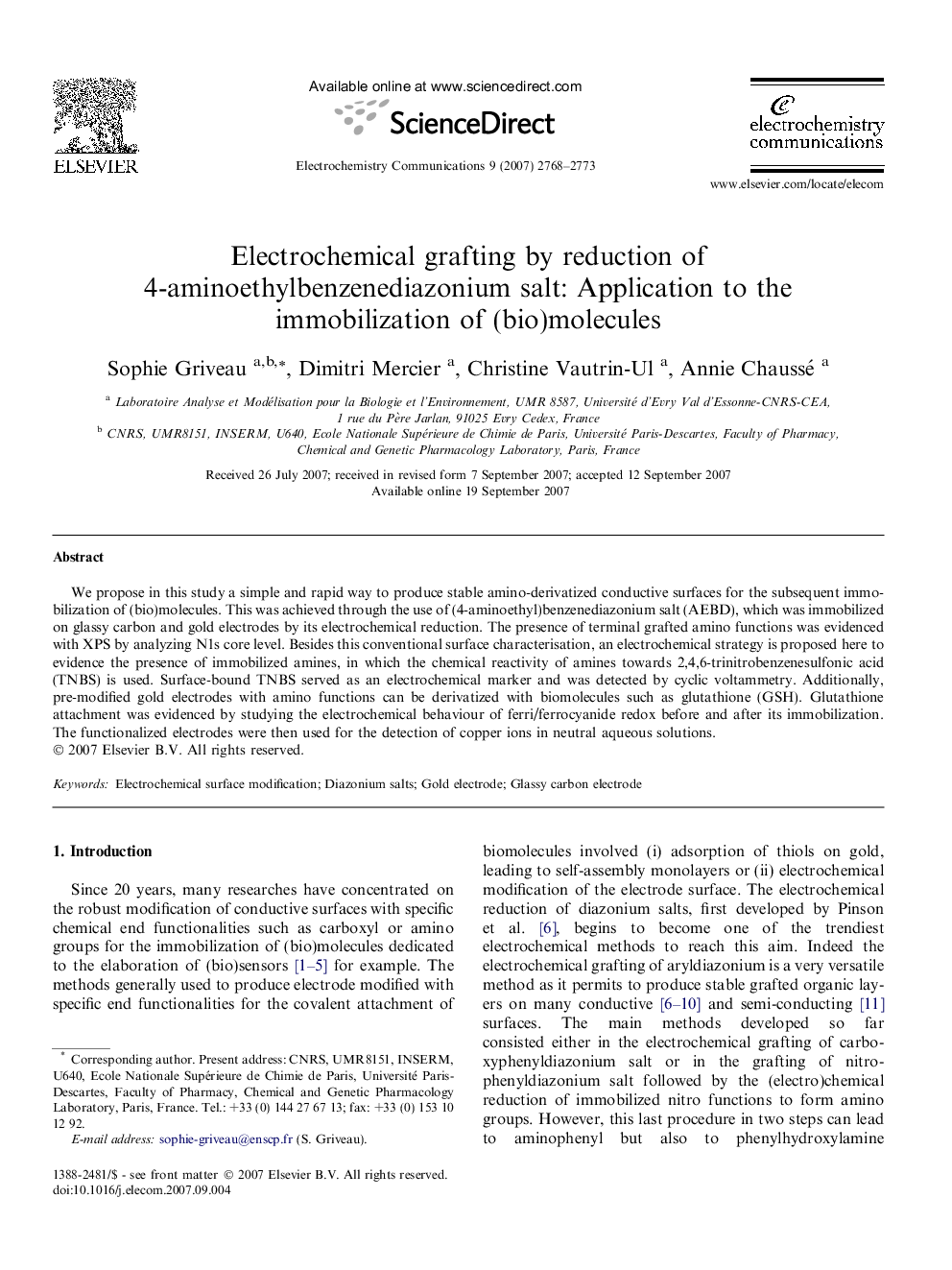| Article ID | Journal | Published Year | Pages | File Type |
|---|---|---|---|---|
| 181682 | Electrochemistry Communications | 2007 | 6 Pages |
We propose in this study a simple and rapid way to produce stable amino-derivatized conductive surfaces for the subsequent immobilization of (bio)molecules. This was achieved through the use of (4-aminoethyl)benzenediazonium salt (AEBD), which was immobilized on glassy carbon and gold electrodes by its electrochemical reduction. The presence of terminal grafted amino functions was evidenced with XPS by analyzing N1s core level. Besides this conventional surface characterisation, an electrochemical strategy is proposed here to evidence the presence of immobilized amines, in which the chemical reactivity of amines towards 2,4,6-trinitrobenzenesulfonic acid (TNBS) is used. Surface-bound TNBS served as an electrochemical marker and was detected by cyclic voltammetry. Additionally, pre-modified gold electrodes with amino functions can be derivatized with biomolecules such as glutathione (GSH). Glutathione attachment was evidenced by studying the electrochemical behaviour of ferri/ferrocyanide redox before and after its immobilization. The functionalized electrodes were then used for the detection of copper ions in neutral aqueous solutions.
